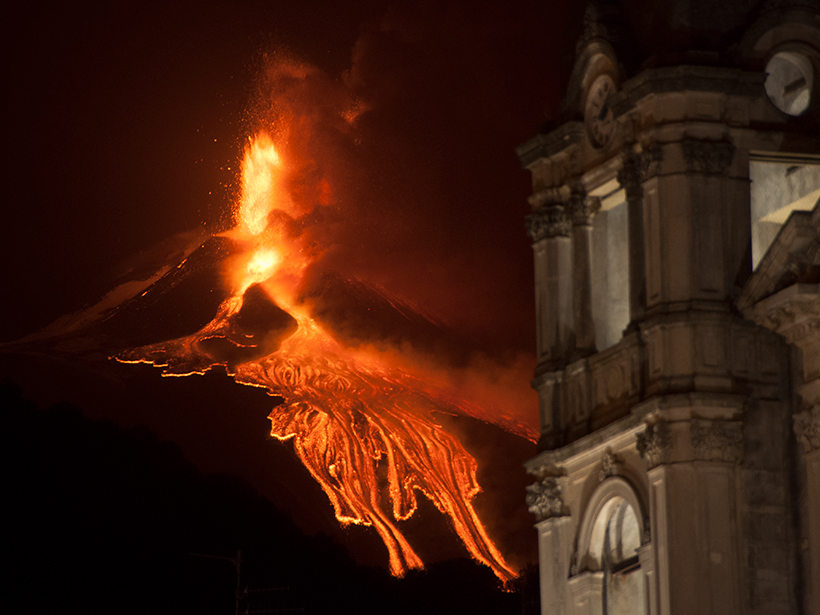Meanwhile, some scientists say that the 35-year eruption from the Pu‘u Ō‘ō vent has ended and that the flows since 3 May are a new eruption. Others take issue with this view.
volcanoes
Scientists Discover an Environment on the Cusp of Habitability
A volcanically heated Costa Rican lake hosts only one type of organism, suggesting that its Mars-like environment is just barely capable of supporting life.
Faster Lava Flows, Explosive Eruptions Begin at Kīlauea
Scientists say the dramatic increase in flows is likely due to the arrival of younger, hotter magma in the system.
Steam-Driven Blasts Last Seen at Kīlauea in 1924 May Recur
Sinking magma levels and rockfalls prompt warnings, flight restrictions, and the shutdown of Hawai’i Volcanoes National Park.
Harnessing Remote Infrasound to Study Volcanic Eruptions
Data from the 2015 eruption of Chile’s Calbuco volcano suggest the international network built to monitor nuclear explosions may also be used to detect and characterize volcanic activity.
Are We Prepared for the Next Mega Eruption?
The frequency of eruptions with a Volcanic Explosivity Index of 7 is only one or two per thousand years but we cannot afford to be complacent.
Visualizing One of the Most Hazardous Formations in Nature
A network of buoys provides a first glimpse of the seafloor beneath a volatile Italian caldera.
Homemade “Spatter Bombs” Can Reveal Volcanic Secrets
Researchers use trial and error to develop a technique to create volcanic lava bombs.
Radon Tells Unexpected Tales of Mount Etna’s Unrest
Readings from a sensor for the radioactive gas near summit craters of the Italian volcano reveal signatures of such processes as seismic rock fracturing and sloshing of groundwater and other fluids.
A Novel Way to Track Magma Flow
Sparse seismic data can accurately predict volcanic eruptions.










